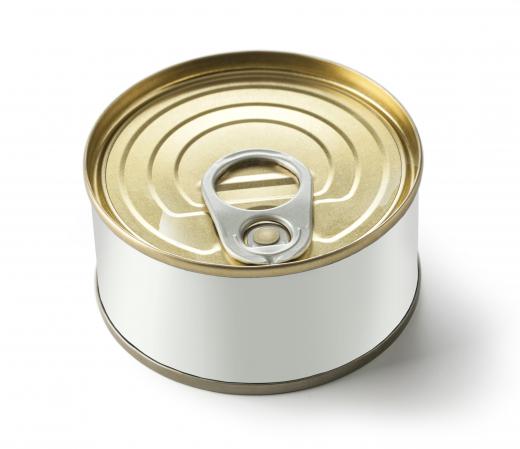Food packaging materials can include metals, paper, cardboard, glass, plastic, Styrofoam, and wood, for a variety of types of food products and conditions. The most suitable packaging can depend on the application, as different products have advantages and drawbacks. Some provide a high degree of insulation and protection to limit bruising and compression, but may not allow people to see the food. Others provide high visibility but minimal protection.
Designers of food packaging need to think about several different issues when they select materials. In initial transport, the primary concern is keeping the food safe, and individual packages may be stacked or loaded into larger cartons and pallets for protection. Once food arrives at a destination, the packaging needs to be showy to catch the eye of consumers, while still offering protection.

For fresh foods like produce and meats, it is common to see food packaging materials like trays and baskets made from Styrofoam, wood, cardboard, or plastic. These allow the food to sit in a solid base that may be covered with rigid or flexible transparent plastic for visibility, to allow consumers to inspect the food before purchase. Other foods may be bagged in flexible food packaging materials to make them easier to handle. Flexible packaging can also be useful for frozen foods ranging from peas to tortellini.

Aseptic food packaging is available for products like canned foods, sterilized milks, and soups. This packaging can come in the form of a can or jar, or it may be a lined cardboard carton designed to be shelf stable. The food inside is not visible, as the packaging needs to protect it from light. Cartons are also used for milk, orange juice, and other fluids that may be sold fresh as well as in stabilized forms.

For dry goods, cardboard and sometimes plastic cartons can be common, while prepared foods like salsa and hummus may require plastic or glass containers. These food packaging materials keep the food safe until use and may provide an opportunity to see the food through a viewing window or clear packaging materials. Fresh foods like seafood and meats sold from a counter may be packaged in paper and wax wrappers.

Designers of food packaging materials often have new products in development, including products with features like temperature sensors to alert consumers to the fact that food has been stored in unsafe temperatures. Companies seeking new packaging for their products may request samples from various manufacturers to learn more about what is available. Some companies may have environmental concerns and might look for recycled or compostable food packaging materials.
Ever since she began contributing to the site several years ago, Mary has embraced the exciting challenge of being a About Mechanics researcher and writer. Mary has a liberal arts degree from Goddard College and spends her free time reading, cooking, and exploring the great outdoors.

